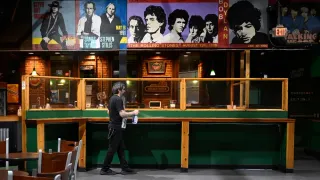
5 hours ago
Champion Launches Global “Champions for Champion” Campaign, Spotlighting Gus Kenworthy and Other Queer Icons
READ TIME: 2 MIN.
Champion, the storied American athletic and lifestyle brand, has launched its latest global campaign, “Champions for Champion,” with a powerful message of inclusion and empowerment. Announced on July 28, 2025, and rolling out globally this August, the campaign features a lineup of trailblazers who are making their mark across sport, music, and culture—including Olympic freestyle skier and LGBTQ+ activist Gus Kenworthy .
The campaign’s launch coincides with the debut of the “Champion for Target” collection—over 500 exclusive pieces of apparel and accessories for adults and kids—available at Target stores and online as of August 3, 2025. This collection is designed to be accessible to a wide audience and is backed by a robust marketing push across digital, social, and out-of-home channels .
Kenworthy, who won a silver medal in freestyle skiing at the 2014 Sochi Winter Olympics and came out as gay in 2015, has long been an outspoken advocate for LGBTQ+ representation in sports. His participation in the “Champions for Champion” campaign is a testament to the brand’s commitment to celebrating authenticity and breaking down barriers for LGBTQ+ athletes and creators .
Joining Kenworthy are other global icons such as Olympic gold medalist Aly Raisman, music artist The Kid LAROI, style leader Romeo Beckham, martial arts prodigy Rayna Vallandingham, and Colombian actor-musician Juan Palau. Each brings their unique story and perspective, reflecting the campaign’s focus on personal empowerment and the diverse ways people define what it means to be a champion today .
The campaign sets itself apart through dynamic storytelling and high-impact visuals that highlight the lives and passions of its featured talent. Every campaign set was designed to reflect the authentic environments and identities of the participants, blending fashion, sport, and purpose. This approach marks a deliberate move by Champion to position itself as a brand that stands at the intersection of social change and pop culture, and as a leader in inclusive messaging within the competitive athleisure market .
By including openly LGBTQ+ figures like Kenworthy, Champion not only recognizes the achievements of queer athletes but also signals to young LGBTQ+ people that they belong in every arena, from sports to fashion and beyond. The campaign’s broad reach—encompassing mass retail through Target and major digital platforms—ensures that these messages of acceptance and empowerment are visible to audiences worldwide .
The campaign arrives at a time when visibility for LGBTQ+ athletes and creators remains a vital issue. Despite progress in many sports, challenges persist for queer individuals seeking acceptance and recognition. By centering voices like Kenworthy’s, Champion’s campaign offers both representation and inspiration, affirming the brand’s longstanding legacy of empowerment and innovation .
Industry observers note that Champion’s move aligns with broader cultural shifts toward inclusivity and authenticity in branding. The campaign’s nostalgic, varsity-inspired designs and archival capsule collections also tap into the brand’s heritage while appealing to new generations seeking both style and substance in their apparel choices .
As the campaign gains traction across social media and retail spaces worldwide, it is poised to spark important conversations about what it means to be a champion in 2025—and who gets to claim that title.






